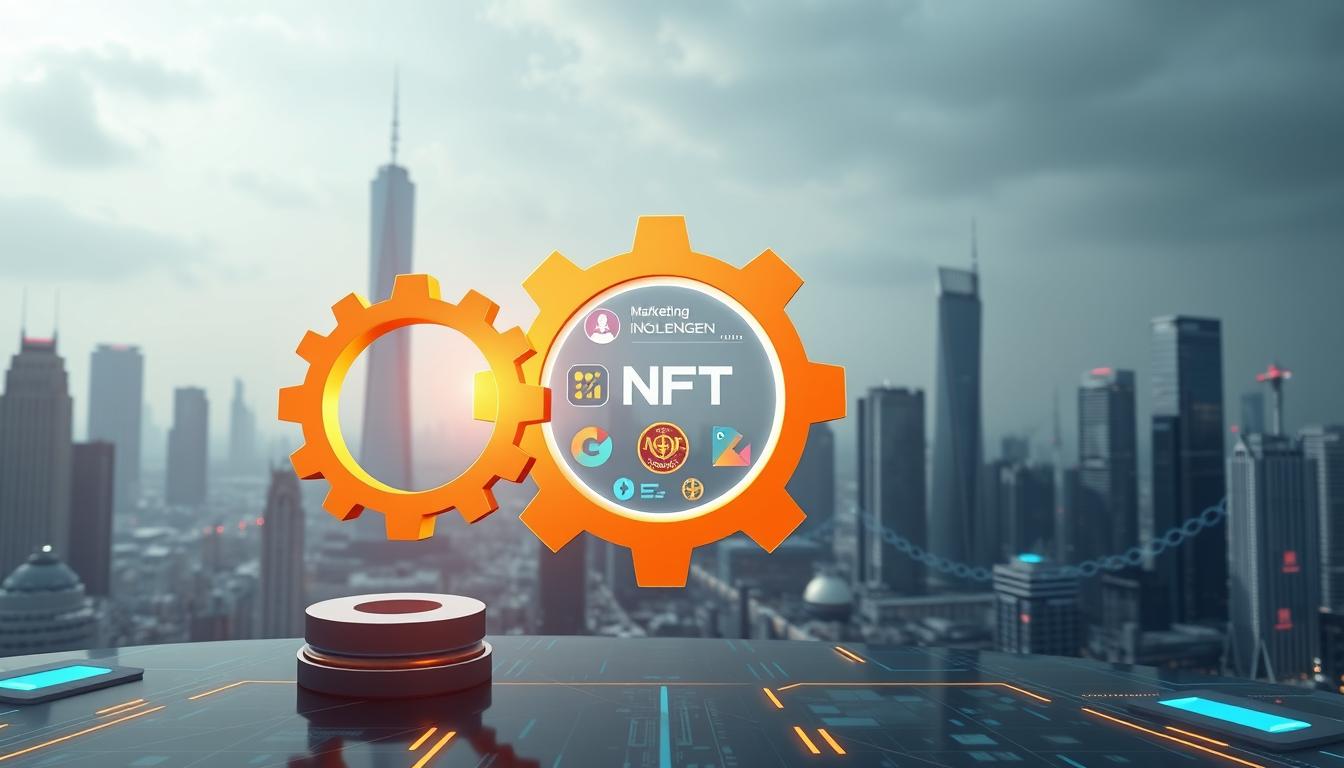Now Reading: Machine Learning Blockchain Governance Voting: A Comprehensive Guide
- 01
Machine Learning Blockchain Governance Voting: A Comprehensive Guide
Machine Learning Blockchain Governance Voting: A Comprehensive Guide

This guide explores how modern tech is changing elections. We look at the mix of smart algorithms and secure digital ledgers. This combination creates new ways to manage group decisions.
These new methods aim to make elections safer and more open. They tackle old problems like fraud and low voter turnout. The goal is to build stronger trust in democratic processes.
Decentralized ledger technology offers a clear and unchangeable record. This boosts transparency and verification. At the same time, intelligent algorithms can spot unusual patterns and predict risks.
We will examine the shift from old, centralized models. The focus is on new, distributed architectures. These systems can monitor activity in real-time and automate tasks.
Good design is crucial for these new systems. A well-built framework must be able to adapt and grow. This development is key for long-term success and survival.
This introduction explains why decision-making rules are so important. They define how changes are made within a network. Understanding this is the first step toward building better voting systems.
Key Takeaways
- Modern technology is merging to create more secure and transparent electoral processes.
- Decentralized ledgers provide an immutable record, helping to prevent fraud.
- Intelligent algorithms enhance security by detecting anomalies and predicting threats.
- There is a clear evolution from traditional centralized models to distributed architectures.
- Effective design is critical for systems to adapt and evolve over time.
- The rules of governance determine how changes are implemented in a network.
- This field offers practical insights for developers, policymakers, and citizens alike.
Overview of Blockchain Governance in E-Voting Systems
The landscape of electoral management is undergoing a profound transformation through the adoption of distributed ledger technology. This shift moves authority from a central body to a shared network. The goal is to create a more resilient and open framework.
Each cast ballot becomes a permanent entry on this digital record. This creates a clear path that anyone can check. Voter anonymity is protected through advanced cryptographic methods.
This structure removes single points of control. Trust is spread across all participants in the network. The entire operation becomes stronger against manipulation and failure.
The rules of the framework are critical. They define how proposals are made and approved. They balance the needs of voters, validators, and developers.
| Aspect | Traditional E-Voting | Blockchain-Based System |
|---|---|---|
| Record Integrity | Centralized database, potentially alterable | Decentralized, immutable ledger |
| Transparency | Limited auditability by the public | Verifiable process for authorized parties |
| System Resilience | Relies on central servers | Distributed network, no single failure point |
| Voter Access | Often limited to specific locations | Potential for remote participation |
Nations like Estonia show the practical potential of this approach. Their systems have demonstrated enhanced security and verifiability. The benefits include faster results and lower operational costs.
Understanding this governance model is essential. It determines how the platform adapts to new threats. It ensures the long-term health and fairness of the electoral process.
The Role of Machine Learning in Modern Voting Systems
The fusion of artificial intelligence with digital voting platforms marks a significant leap forward in electoral security. These intelligent systems analyze vast amounts of data to make informed decisions. This proactive approach transforms how we protect the integrity of elections.
AI-Driven Decision Making
Smart algorithms examine voter patterns in real-time. They can instantly flag unusual activity that might indicate fraud. This continuous oversight creates a dynamic and responsive process.
Both supervised and unsupervised model techniques are employed. They learn from historical information to identify potential risks. This allows for automated, intelligent responses to threats.
Enhancing Security and Prediction through ML
Predictive analytics are a core strength of this technology. By studying network behavior, these systems can forecast security breaches before they happen. This enables a powerful, preemptive defense strategy.
Furthermore, these tools optimize resource allocation across the entire network. They manage computational load during high-traffic periods, ensuring smooth operation for all users. The result is a more resilient and trustworthy electoral environment.
Machine learning blockchain governance voting
A powerful synergy emerges when adaptive algorithms are integrated with secure, decentralized record-keeping for decision-making. This combination creates intelligent electoral systems that evolve using data-driven insights. They move beyond static rules to become dynamic and self-improving.
These advanced frameworks analyze vast amounts of information. They examine transaction patterns and network behaviors to spot optimization opportunities. This process also identifies subtle security threats that human administrators might miss.
A key innovation involves Large Language Models (LLMs). They allow stakeholders to describe rules in plain language. The AI then translates these descriptions into secure, deployable smart contract code, reducing technical barriers.
The mechanisms for continuous validation are another major benefit. They monitor smart contract execution in real-time. If a deviation from expected behavior occurs, the system can trigger an automated response to maintain integrity.
Consensus protocols also become more sophisticated. Predictive models can adjust parameters based on network conditions. This balances throughput with security needs, enhancing overall efficiency.
Evaluating these integrated systems requires a multi-dimensional framework. Experts assess scalability, security, privacy, and implementation complexity. This comparative analysis ensures robust development and practical application.
Exploring Decentralized Decision-Making in Elections
A paradigm shift is occurring in how societies organize their decision-making frameworks, moving away from centralized control. This approach distributes authority across multiple participants rather than concentrating it in single institutions.

Benefits of Decentralized Processes
Distributed systems create robust frameworks that resist manipulation and single points of failure. Multiple independent parties validate transactions, enhancing transparency throughout the entire process. This distributed verification builds trust through cryptographic proof rather than institutional reputation.
The architecture creates checks and balances similar to governmental separation of power. Different stakeholder groups maintain mutual oversight, preventing any single entity from gaining disproportionate control. This distribution enhances resilience by ensuring continued operation even if individual participants encounter issues.
Challenges in Implementing Decentralization
Coordinating consensus among distributed parties presents significant challenges. Reaching agreement takes more time and effort compared to centralized decision-making. There’s also risk of power concentration despite decentralized designs.
Technical hurdles include managing synchronization across geographically dispersed nodes. Ensuring all users have consistent views of the voting state requires sophisticated network structures. Social challenges involve educating participants and establishing effective dispute resolution mechanisms.
Consensus Mechanisms and Their Impact on System Scalability
The performance and integrity of any distributed electoral platform hinge on its core agreement protocol. These rules determine how participants validate each action and update the shared record. The chosen method directly influences speed, security, and energy consumption.
Proof of Stake vs. Proof of Work
Proof of Work (PoW) relies on solving complex puzzles. This provides strong security but is incredibly slow and energy-intensive. It processes only a handful of actions per second, making it impractical for large-scale events.
Proof of Stake (PoS) selects validators based on their economic stake. This approach is far more efficient, enabling faster processing and lower power use. However, it can lead to power concentration among the wealthiest participants.
Hybrid Consensus Models
Hybrid models combine the efficiency of PoS with advanced security features like Byzantine Fault Tolerance (BFT). This creates a robust framework capable of handling high volumes securely. They represent a balanced path forward for modern electoral needs.
| Mechanism | Transactions Per Second (TPS) | Energy Efficiency | Key Risk |
|---|---|---|---|
| Proof of Work (PoW) | ~7 TPS | Very Low | Extreme resource consumption |
| Proof of Stake (PoS) | 1,000+ TPS | High | Centralization of power |
| Hybrid (PoS+BFT) | 10,000+ TPS | High | Implementation complexity |
Selecting the right protocol is a critical architectural decision. It defines the system’s ability to scale for millions of users simultaneously. A well-chosen model ensures both resilience and practical performance.
Cryptographic Innovations for Voter Privacy Protection
The mathematical foundations of modern cryptography provide unprecedented solutions for balancing ballot secrecy with electoral transparency. These advanced techniques ensure that individual choices remain confidential while allowing public verification of overall results.

Zero-Knowledge Proofs and Homomorphic Encryption
Zero-knowledge proofs represent a breakthrough in privacy-preserving technology. They allow voters to mathematically prove their ballot was cast correctly without revealing its contents. This maintains complete privacy while ensuring electoral integrity.
Homomorphic encryption enables votes to be counted while remaining encrypted. Election officials can tally results without ever decrypting individual ballots. This approach fundamentally resolves the conflict between transparency and confidentiality.
Despite their mathematical elegance, traditional implementations face computational challenges. Verification processes can take significant time per vote. This creates scalability issues for large-scale elections.
| Cryptographic Technique | Primary Benefit | Implementation Challenge | Best Use Case |
|---|---|---|---|
| Zero-Knowledge Proofs | Verification without disclosure | High computational overhead | Small to medium elections |
| Homomorphic Encryption | Encrypted computation | Complex key management | Privacy-critical scenarios |
| Lightweight Protocols | Reduced resource demands | Security trade-offs | Large-scale implementations |
| Anonymous Credentials | Identity protection | User education required | Decentralized systems |
Researchers have developed lightweight protocols to address performance limitations. These optimized algorithms maintain security while reducing computational demands. They represent practical solutions for real-world electoral systems.
Standardization of cryptographic techniques is essential for interoperability. Consistent protocols enable different platforms to work together seamlessly. This ensures broad adoption across various electoral frameworks.
Addressing Security Concerns and Sybil Attack Mitigation
A primary obstacle to fair digital elections is the risk of identity-based manipulation, known as Sybil attacks. In these scenarios, a malicious actor creates countless fake accounts to sway outcomes. The near-zero cost of generating addresses on a distributed ledger makes this a significant security concern.
This vulnerability is why many decentralized systems default to a one-token-one-vote model. It ties influence to economic stake, reducing the risk of fake identities. However, this approach can lead to plutocratic outcomes, where wealth equals power.
Balancing voter privacy with Sybil resistance is a core design challenge. True anonymity allows for attacks, while strict identity checks erode confidentiality. Cryptographic identity solutions, like those from Civic, offer a middle path. Users can prove they are unique individuals without exposing personal data.
Hybrid models present another innovative solution. They can assign tiered voting power based on verification level:
- Full verification grants 100% of a participant’s voting power.
- Partial verification might reduce influence to 50%.
- Anonymous participation could be limited to 25% power.
This creates incentives for identity confirmation while preserving privacy options. Additional protocols, like reputation tracking and social consensus, further strengthen defenses. A multi-layered strategy is essential for building trust in these advanced electoral systems.
Implementation Challenges in Blockchain-Based Voting Platforms
Moving from theoretical models to real-world application reveals significant hurdles for secure digital elections. Despite promising research, widespread deployment faces complex barriers.

These obstacles extend far beyond pure technical development. They include legal, organizational, and social issues that current systems struggle to address.
Interoperability and Standardization Issues
A major concern is the lack of common standards. Different platforms use incompatible protocols and smart contract languages.
This creates serious interoperability issues. It becomes extremely difficult for a new system to communicate with existing electoral infrastructure.
Each jurisdiction must essentially start from scratch. This significantly increases development costs and security risks. Researchers like Carter and Moore emphasize establishing standard protocols as critical for national adoption.
National-level deployment requires collaboration among diverse groups:
- Election officials and legal authorities
- Technology vendors and cybersecurity experts
- Political parties and accessibility advocates
These stakeholders often have conflicting priorities. Coordinating them presents a massive organizational challenge. Practical solutions include open-source reference implementations and extensive pilot programs.
Leveraging Large Language Models for Smart Contract Development
Large language models bridge the gap between technical complexity and practical application in electoral system design. These AI tools enable non-technical stakeholders to describe voting rules in plain English. The technology then converts these descriptions into secure, functional code.
LLM-Assisted Code Generation
This approach dramatically simplifies contract creation. Users provide natural language prompts like “create a system that prevents double voting.” The AI generates complete Solidity contracts with proper data structures and security checks.
Prototypes using models like GPT-4 have successfully produced working voting contracts. They implement registration, ballot casting, and results tallying. This reduces development time from months to days.
Static Analysis and Security Auditing
Automated validation forms a critical safety layer. Generated contracts undergo analysis by tools like Slither. These tools identify vulnerabilities and unsafe coding patterns.
The system creates a feedback loop where the AI receives security reports. It then generates corrected code until all checks pass. This combines automated creation with robust validation.
Enhancing Transparency and Trust through Immutable Ledgers
The fundamental relationship between transparency and trust in electoral systems finds new technological expression through immutable digital records. These permanent, tamper-proof ledgers create an unchangeable history of every action. This addresses core concerns about manipulation after ballots are cast.
Transparency operates across multiple levels in these advanced frameworks. All network participants can view transaction records while voter identities remain protected. The rules for validation and tallying procedures are publicly visible through smart contracts.
This architecture enables independent auditing by any authorized party. Observers, candidates, and political groups can verify the entire process from registration to final results. They don’t need to trust centralized authorities or databases.
The combination creates a self-enforcing trust mechanism. System integrity becomes mathematically provable rather than dependent on institutional reputation. This reduces the need for intermediaries and increases public confidence.
Real-time auditability represents another significant advantage. Stakeholders can monitor elections as they progress, detecting issues immediately. This prevents problems from emerging days or weeks after voting concludes.
Research by Balti and colleagues demonstrates how smart contracts facilitate transparent vote recording. The technology ensures all votes process according to predetermined rules without bias. This mathematical certainty strengthens democratic legitimacy across communities.
Comparative Analysis of E-Voting Architectures and Performance
The choice between permissionless, permissioned, and hybrid architectures significantly impacts the performance characteristics of electoral platforms. Each approach offers distinct advantages and limitations that must be carefully evaluated.
Evaluation of Ecosystem Models
A comprehensive comparison framework assesses four critical dimensions. Scalability measures transaction throughput for large-scale elections. Security and privacy evaluate protection against attacks while maintaining voter anonymity.
Efficiency examines computational costs and energy consumption. Implementation complexity analyzes integration challenges with existing electoral systems. This evaluation reveals inherent trade-offs in different design choices.
| Architecture Type | Scalability | Security Level | Implementation Complexity |
|---|---|---|---|
| Permissionless | Low to Medium | High (Decentralized) | High |
| Permissioned | High | Medium (Centralized Risk) | Medium |
| Hybrid Models | Very High | High (Balanced) | Very High |
Permissionless architectures maximize decentralization but face scalability limitations. Permissioned frameworks, like those proposed by Naik et al., enhance security through verified participation but risk centralization.
Hybrid models such as HAC-Bchain attempt to capture benefits of both approaches. They use dynamic sharding to improve throughput while maintaining security. However, inter-shard communication creates consistency challenges.
Ecosystem evaluation extends beyond technical performance. It considers developer community size, available tooling, and regulatory compliance capabilities. A recent comprehensive study provides detailed insights into these architectural trade-offs.
Integrating Machine Learning into Governance Processes
Intelligent algorithms are now transforming how group decisions are made and managed within digital frameworks. These systems move beyond simple rule execution. They create adaptive environments that learn from information and improve over time.
This evolution turns static frameworks into dynamic, self-optimizing structures. The core benefit is a shift from reactive oversight to proactive management. It empowers the entire network with data-driven insights.

Streamlining Decision-Making Mechanisms
One major advancement is the automated analysis of stakeholder proposals. Algorithms process historical data and performance metrics. They predict the potential impact of changes before implementation.
This predictive capability significantly reduces the risk of unintended consequences. It provides voters with clear, objective assessments of each proposal. A recent analysis highlights how this creates more informed participation.
These mechanisms also automate routine tasks and prioritize urgent matters. They identify similar proposals for consolidation. This streamlines the entire process, making it more efficient for all participants.
Continuous monitoring forms another critical layer. Algorithms validate smart contract execution in real-time. They detect anomalies and can trigger automated responses to maintain system integrity.
This creates a powerful feedback loop. Every decision generates new data, which further trains the models. The result is a self-improving governance framework that becomes smarter with each cycle.
Optimization Strategies for Scalable and Secure E-Voting
Advanced electoral systems demand sophisticated approaches to overcome inherent limitations in scale and security. Researchers have developed multiple optimization techniques that address these critical challenges simultaneously.
Hybrid consensus models combine Proof of Stake efficiency with Byzantine Fault Tolerance security. This approach enables thousands of transactions per second while maintaining strong protection against attacks.
Sharding and parallel processing dramatically improve system throughput. These techniques partition networks into independent segments that process votes simultaneously.
Lightweight cryptographic protocols replace computationally expensive methods. They use optimized algorithms to reduce processing time from seconds to milliseconds.
| Optimization Technique | Scalability Impact | Security Level | Implementation Complexity |
|---|---|---|---|
| Hybrid Consensus | High (1,000+ TPS) | Very High | Medium |
| Sharding | Very High (10,000+ TPS) | High | High |
| Lightweight Cryptography | Medium | High | Low |
| Layer-2 Solutions | Extreme (100,000+ TPS) | Medium | Very High |
Decentralized identity management eliminates centralized registration bottlenecks. It distributes authentication across the network for rapid eligibility checking.
These optimization strategies create frameworks capable of handling millions of participants. They balance speed, security, and efficiency for real-world electoral applications.
Emerging Trends in Blockchain Technology and User Engagement
The next decade promises unprecedented experimentation in how societies organize collective decision-making. We are entering a period of rapid innovation where countless approaches will be tested simultaneously. This accelerated pace could reveal more about effective governance than centuries of traditional research.
Digital citizens now spend over half their waking hours connected to networks. This creates fertile ground for new participation models. The infrastructure emerging today will shape tomorrow’s power structures.
Integration of AI and Blockchain
Artificial intelligence and distributed ledgers create powerful synergies. The technology provides transparent data for training smart algorithms. These systems then enhance performance through intelligent automation and optimization.
Cross-chain interoperability projects enable specialized platform combinations. Different networks can handle identity, processing, and storage separately. This modular approach increases flexibility while maintaining security.
Innovative Research Directions
Privacy-preserving protocols like zero-knowledge proofs are advancing rapidly. They enable complete transparency while mathematically proving voter anonymity. These innovations balance verification with confidentiality.
User engagement focuses on reducing friction through progressive web applications. Social recovery mechanisms prevent access loss from forgotten credentials. Gamification techniques can significantly boost participation rates.
| Research Area | Current Focus | Potential Impact | Implementation Timeline |
|---|---|---|---|
| Formal Verification | Mathematical proof of code correctness | Eliminate smart contract vulnerabilities | 2-3 years |
| Quantum Resistance | Cryptographic protocols for future security | Protect against advanced computing threats | 5+ years |
| Adaptive Frameworks | Self-evolving governance rules | Continuous system improvement | 3-4 years |
| Pilot Deployments | Controlled environment testing | Real-world performance data | 1-2 years |
Future work should prioritize open standards for cross-system compatibility. Real-world testing in university and corporate settings will generate crucial behavioral data. These projects lay the foundation for broader adoption.
Policy Implications and Regulatory Strategies in the United States
The successful integration of advanced electoral technologies into the American political landscape hinges on navigating a complex web of policy and regulation. This process involves balancing the need for innovation with the absolute requirement for security and public trust.
A central challenge is the division of authority between federal and state governments. Election administration is primarily a state responsibility. This creates a patchwork of legal landscapes that technology must adapt to.
Balancing Innovation with Security
Regulatory frameworks currently lag behind technological capabilities. Many states lack clear legal authority to use distributed ledgers for official elections. This creates uncertainty for officials, developers, and voters.
Overly restrictive rules could stifle beneficial advancement. However, insufficient oversight risks catastrophic failures. The goal is to establish security benchmarks while allowing flexible implementation.
Key strategies for responsible adoption include:
- Phased implementation, starting with low-stakes votes like party primaries.
- Developing new certification and auditing frameworks for distributed systems.
- Ensuring new platforms provide equal access and comply with disability laws.
Formal collaboration between election officials, cybersecurity experts, and civil rights groups is essential. This dialogue helps shape standards and build consensus for secure, trustworthy systems.
Conclusion
Looking ahead, the intersection of cutting-edge technologies presents remarkable opportunities for enhancing democratic participation. This comprehensive examination reveals that hybrid systems combining multiple innovations show the greatest promise for real-world deployment.
The successful implementation of these advanced electoral platforms requires addressing multifaceted challenges. These span technical domains, social dimensions, and regulatory frameworks. Practical pathways involve phased adoption strategies beginning with controlled pilot studies.
Future development depends on continued research in key areas like formal verification and quantum-resistant cryptography. As explored in our analysis of blockchain-based electoral frameworks, success requires balancing competing priorities through evidence-based design.
Ultimately, these technological solutions have the potential to transform democratic participation. They can increase trust through verifiable transparency while creating more responsive decision-making processes.
FAQ
How does artificial intelligence improve the security of an electronic voting system?
Artificial intelligence enhances security by analyzing patterns in data to detect anomalies and potential threats, such as Sybil attacks. AI-driven models can predict and identify fraudulent behavior in real-time, increasing the overall integrity of the process.
What are the main benefits of using a proof-of-stake consensus mechanism for governance?
A proof-of-stake approach offers greater energy efficiency and scalability compared to proof-of-work. It allows users with a stake in the network to participate in validation, which can help reduce the risk of centralization and promote a more decentralized structure.
What is the role of smart contracts in a decentralized voting platform?
Smart contracts automate the execution of voting rules on a blockchain, ensuring that the process is transparent and tamper-proof. They encode the protocol’s logic, automatically tallying votes and enforcing outcomes without the need for a central authority.
How can zero-knowledge proofs protect voter privacy?
Zero-knowledge proofs allow a user to verify the validity of a transaction or vote without revealing any underlying personal data. This cryptographic technique ensures privacy while maintaining the necessary transparency and trust in the system’s results.
What are the biggest implementation challenges for blockchain-based voting?
Key challenges include achieving interoperability between different systems, ensuring user-friendly access, and addressing scalability issues. Standardizing protocols and managing identity verification without compromising privacy are also significant concerns for developers.
How can large language models assist in the development of secure voting systems?
Large language models can help developers by generating and auditing smart contract code. They perform static analysis to identify potential vulnerabilities, speeding up the development cycle and enhancing the security of the final implementation.















